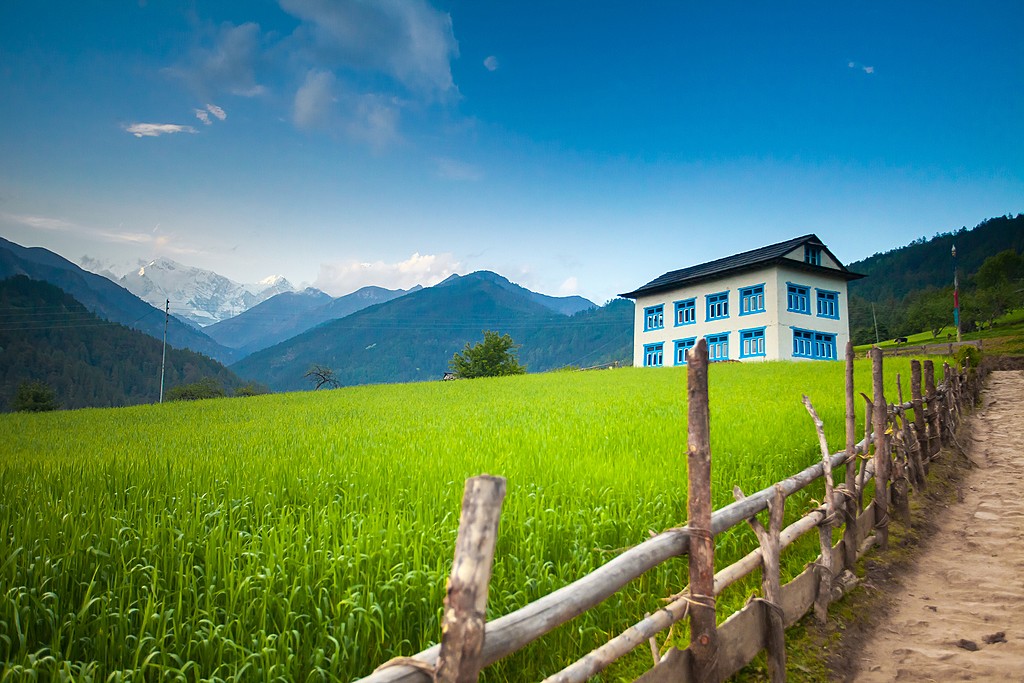Teahouse trekking refers to staying in a lodge for each night of your trek. Almost all of the main trekking routes in Nepal are teahouse treks, and allow the trekker to travel with the miminum amount of gear.
A teahouse can refer to a large comfortable, well-built lodges with common areas (as found in the Solu Khumbu), to a small bamboo hut lodged within the forest on a steep hill.
What is a Teahouse?
Teahouses vary slightly from region to region, but most are simple stone and wooden buildings or huts that have a kitchen, a communal eating hall and bathroom area, and a number of basic bedrooms that usually have two single beds and a table. Most teahouses are built specifically for trekkers, but some, in the more remote regions of Nepal, may double as the family's home.




Private Rooms

Expect the rooms to be basic but clean, and to pay slightly more for an attached bathroom. Your room will come with a thick blanket (feel free to double-up, if it's cold), which you can use as a second layer over top your sleeping bag or as your main blanket for the night. Most trekkers skip on showers during their trek, but some teahouses do offer hot bucket showers at a small fee.
Insider tip: If you're worried about cleanliness, bring your own bed liner or light sleeping bag from home or purchase one in Kathmandu or Pokhara. It's always wise to bring a pair of ear plugs, as the walls in most teahouses are quite thin.)
Chat with a local specialist who can help organize your trip.
Teahouse Etiquette
If your accommodation and meals are included as part of a package trek, then everything will be taken care of at your teahouse besides personal snacks and drinks, which you usually pay for yourself. In almost all cases, the cost of your room is very affordable (around $5/night), where the owners make most of their income from the meals and beverages. For this reason, you are expected to eat all your meals at the teahouse at which you're staying.
Meals at Your Teahouse
You'll find a similar set menu of dhal bhat, momos, pasta, pizza, and other rice and noodle dishes at almost all the teahouses. Some dishes take longer to make than others (such as momos), so best to check in advance as to what's fresh and available. To avoid getting sick on the trek, it's wise to order whatever's fresh. Most trekkers, guides, and porters opt for dhal bhat - it's generally consistent, healthy, and readily available wherever you go.
Generally, the higher you get in your trek the more that meals will proceed to cost. At Gorak Shep (located high in the mountains, close to Everest Basecamp), for example, expect to pay more for dhal bhat than you would down in Lukla (which is easily accessible due to its airport and lower elevation).


Wi-Fi & Electricity
Many teahouses in Nepal now have wi-fi and charging outlets available in the dining hall. Still, connection speed and availability is spotty, at best, and slows down the more people that are connected to it (due to old routers). Teahouses in the Solu Khumbu have better internet connections (especially in Namche Bazaar), but don't expect too much elsewhere in Nepal.
At most teahouses, you can pay to charge your electronic devices for around $2.50 (Rs. 250). Power outages are quite frequent, however, so be sure to charge when you get the chance!
